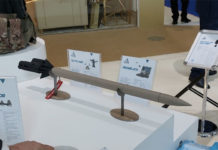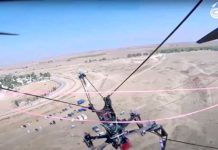Deployment of sophisticated homeland security systems at the federal, state and even the municipal levels open new opportunities for simulation and training and simulation companies. “Our overall objective is to improve emergency management services for a community while offering improved job satisfaction for first responders,” said Marc Parent, CAE’s Group President, Simulation Products and Military Training & Services. Traditionally the EMS market has not been exposed to simulation for operations and training. “We plan to develop a range of simulation-based solutions that will support emergency management teams in planning, testing, training, and deploying for response operations.” said Parent.
Training solutions are being fielded with first responders and at strategic levels of the homeland security hierarchy, aiming to improve the quality and effectiveness of decisions made at the various levels of command, and optimal use and prioritization of available resources. Among the companies demonstrating new simulators for homeland security, were CAE which announced its ‘Deploy’ training system, designed to assist decision-support with Emergency Management Service (EMS) organizations, facilitating faster, more effective deployment of first responders, such as police, fire departments, medical care, and NBCR to better respond to emergencies and improve public safety and security. The simulator integrates intelligent resource management, traffic prediction, and simulation-based visualization tools used for decision support. When integrated with existing operational systems, CAE Deploy offers real-time team positioning data and enhanced situational awareness. Using sophisticated scheduling, optimization and prediction models developed by Actenum Corporation, CAE Deploy will anticipate response times, monitor EMS team workloads and break periods, and help enhance coverage. CAE has worked closely with the EMS and first responder community to develop the CAE Deploy solution, which includes commercial-off-the-shelf (COTS) simulation software from Presagis, CAE’s COTS software company.
Alion also presented an Emergency Command System-Training and Exercising Tool (ECS-TET), supporting the Department of Homeland Security methodology for training and exercising emergency managers and other personnel at the county, state and national level. Northrop Grumman demonstrated its suite of training simulation, control, interface and visualization tools called ‘ The Emergency Preparedness Federation’ that offers comprehensive solutions to help planners, strategists, emergency responders and post-disaster recovery teams prepare for and handle emergency situations. It is executed with the company’s proprietary TouchTable, allowing collaborative control and enhancing after-action review.
Elbit Systems introduced at I/ITSEC a new, multi-disciplinary simulation system designed for training first responders and emergency agencies. Elbit’s Home-Land Security Simulation (HLS2) presents trainees with a wide spectrum of scenarios, including hazardous materials events, rescue operations in massive-destruction situations, “mega-terror” and unconventional threat events, border and crossing controls, air and seaport security, strategic facility defense, accidents and natural disasters.
By training in virtual environments that replicate actual occurrences, trainees practice different missions and arrive on duty with sharper operational skills.
The simulation is based on a Synthetic Virtual Arena based on geo-specific urban environment. It recreates urban area terrain features such as streets, houses and electrical poles. It simulates urban traffic, with humans, vehicles, traffic lights and junctions. Also represented are realistic command, control and communications, elements, combined to create virtual replications of the operational arena and prepare trainees for real-life situations. The HLS2 incorporates a variety of advanced simulation models, including artificial intelligence human behavior, population movement and behavior characteristics.
Other topics covered in this review:
- Simulation & Training technologies at I/ITSEC 2007
- Populating the Virtual Worlds
- Training and Simulation for the First Responders
- Practicing Air/Ground Missions
















